An Art Vigil for the Children of Israel and Palestine
Pouring our despair into art.
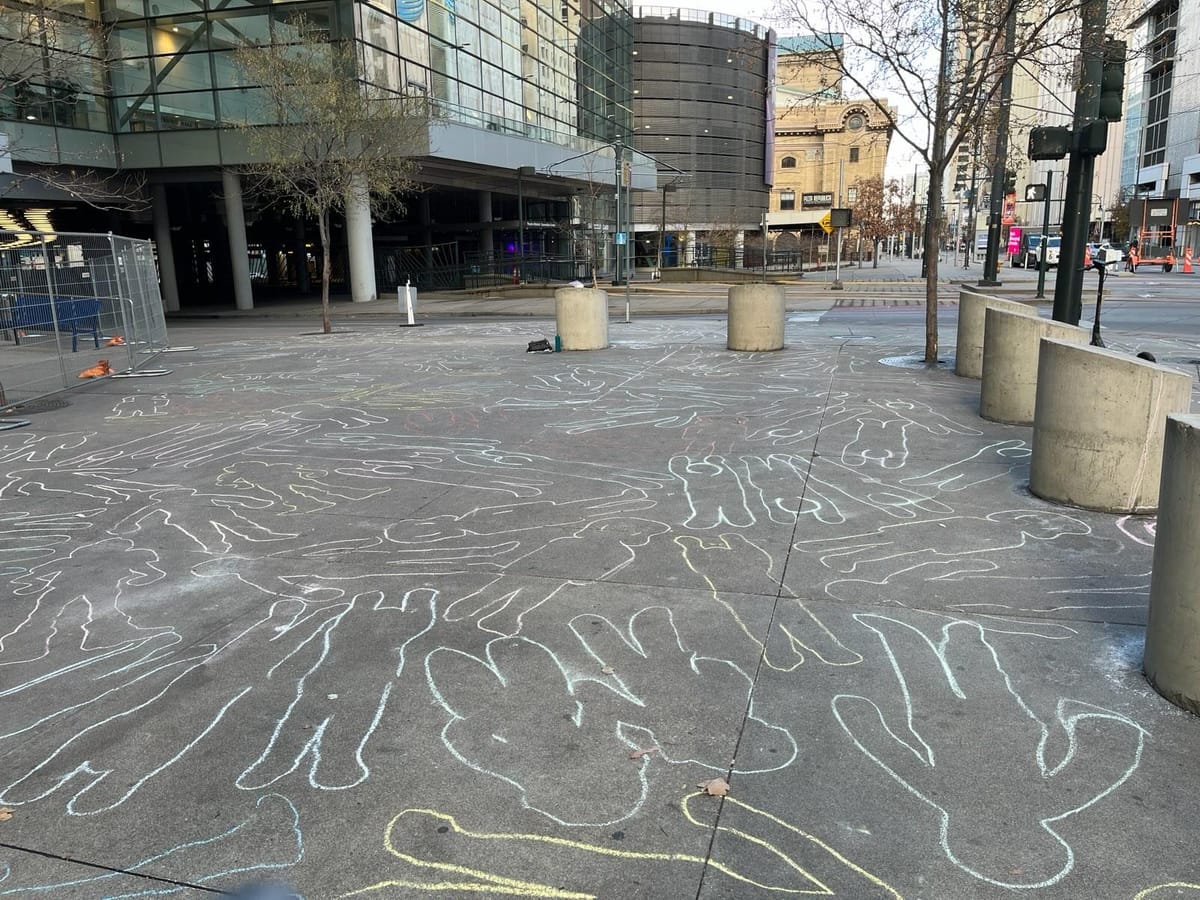
Rachel and I gathered to mourn the violence in Israel and Palestine. We were both feeling immobilized by our sadness. We wanted to keep grieving, but also act for peace. We wanted to do something but what?
We turned to a card deck called Beautiful Trouble, designed in part by my friend Rae Abileah, an inspiring Jewish peace activist working for collective Jewish and Palestinian liberation.
The Beautiful Trouble cards are a collection of principles, theories and tactics from social movements. One of the "games" you can play is called Design an Action.
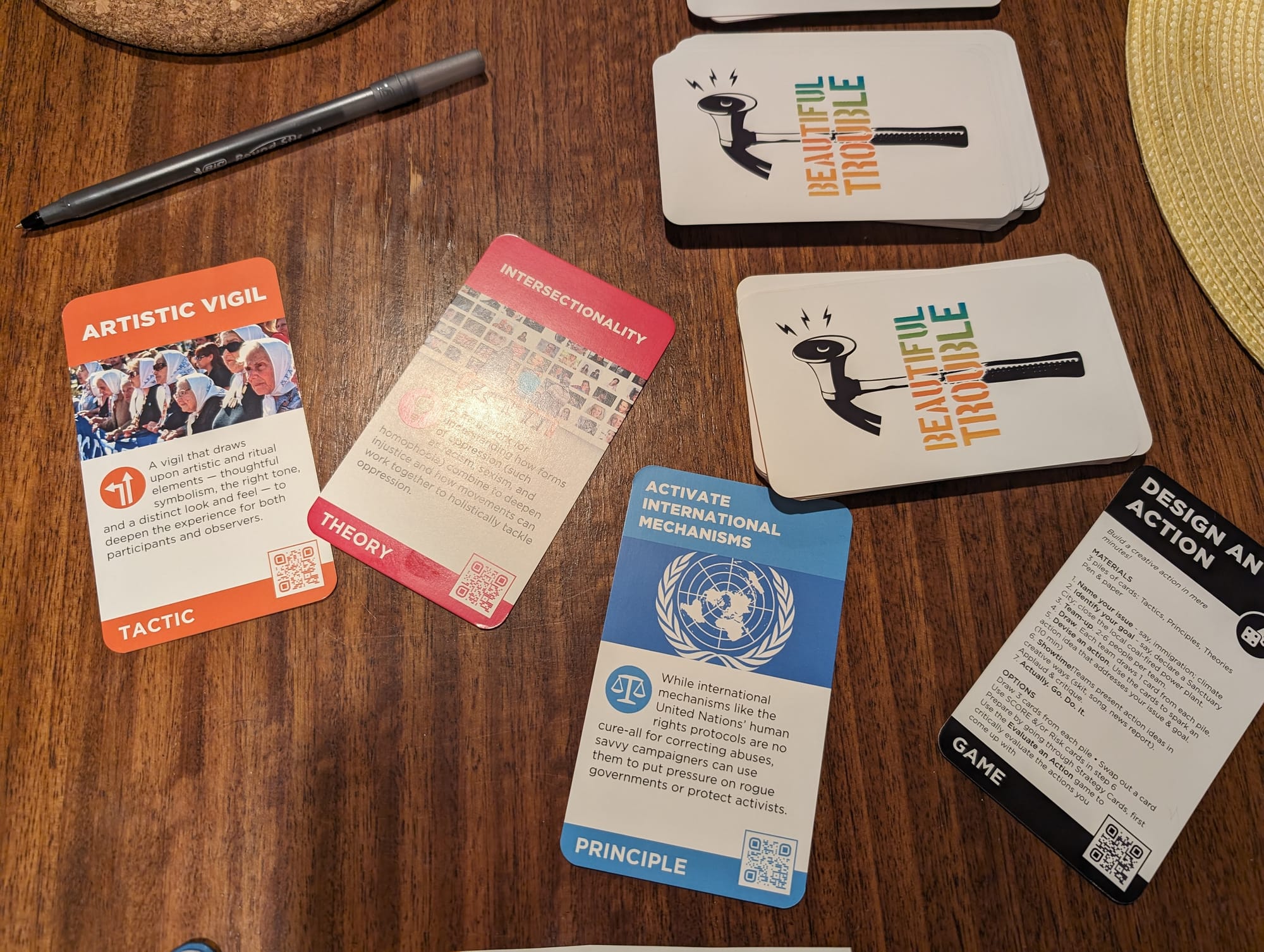
Our issue was peace and justice in Israel and Palestine.
The goal was to get our representatives to endorse a ceasefire, plus an intermediate goal of building popular support in our community for ceasefire now and justice and healing long term.
We drew three cards -
- Tactic - artistic vigil
- Theory - intersectionality
- Principle - activate international mechanisms
We were going to draw another set to compare and choose between, but these three fit perfectly for us.
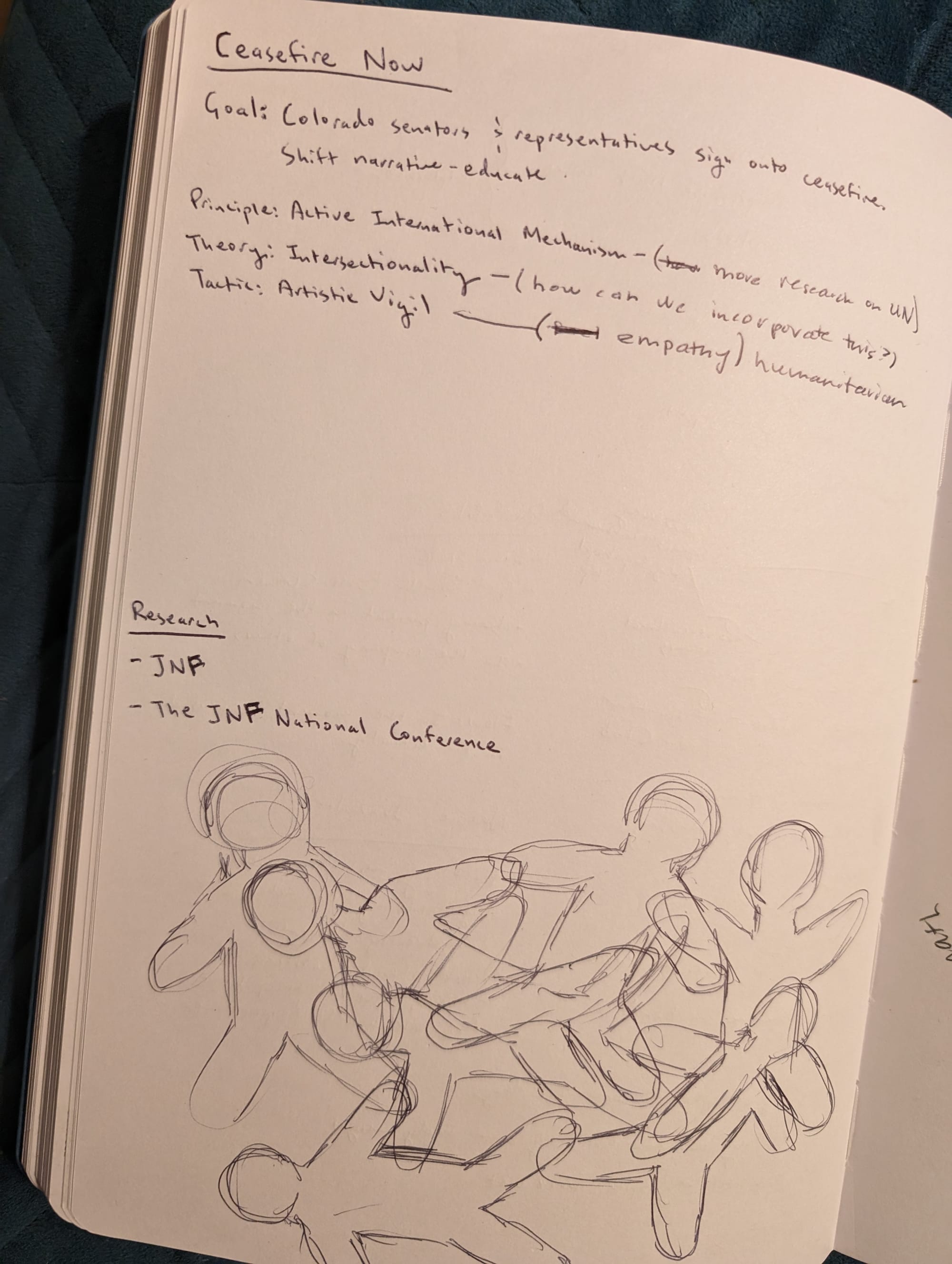
Artistic Vigil
As parents, we were especially heartbroken over the children killed. We came up with the idea of tracing chalk outlines on the sidewalk. One for every life taken since October 7th. The 23 children killed by Hamas and the over 7,000 (and growing) children killed by the Israeli military.
Intersectionality
Our vigil mourns all souls, unconditonally. Every life is precious.
It does so while using the lens of intersectionality to understand the underlying injustice and oppressive power dynamics that must be resolved to end this cycle of violence.
The vigil calls on Israel to end its apartheid system and occupation of Palestine. It condemns our US government's military support that violently enforces this occupation.
This is all done while also fighting antisemitism; knowing that true, lasting, secure Jewish safety will come from collective liberation, not militarism and occupation.
Activate International Mechanisms
The United Nations formed to foster international peace after the horrors of World War 2.
Early on in Israel's retaliation, the UN Secretary General, the UN Human Rights Council and the UN Committee on the Rights of the Child all called for a ceasefire to negotiate a return of the hostages and begin the process of justice and eventually healing. Yesterday the UN assembly voted to do the same.
The UN has for years now called for an end to apartheid and occupation. There is wisdom in this international body, tasked with maintaining international peace and security.
Creating the Vigil
The next day Rachel traced her students with sharpie on cardboard. That night we gathered at my house and cut out the shapes. It was heartbreaking, but comforting to be together in our pain.
The morning of a ceasefire rally Rachel and fellow teachers went to downtown Denver and began tracing the outlines. She told me that at first it was quiet; her silent with each child she traced, feeling the absence of their life, gone from this earth.
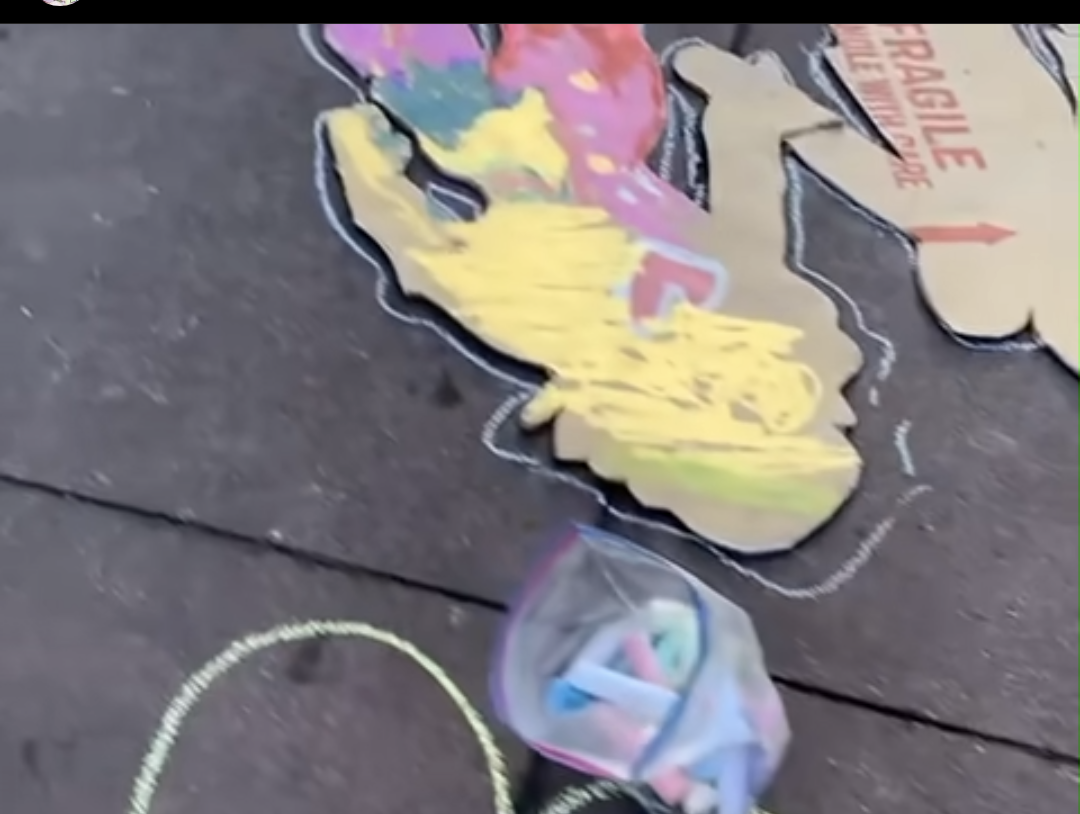
As people started arriving for the rally they saw the vigil in process, picked up chalk and joined the vigil.
The growing crowd drew child after child, covering the sidewalk, then the street. Hundreds of children's silhouettes were drawn in the end. It never did reached the total number. That's how immense this tragedy is.
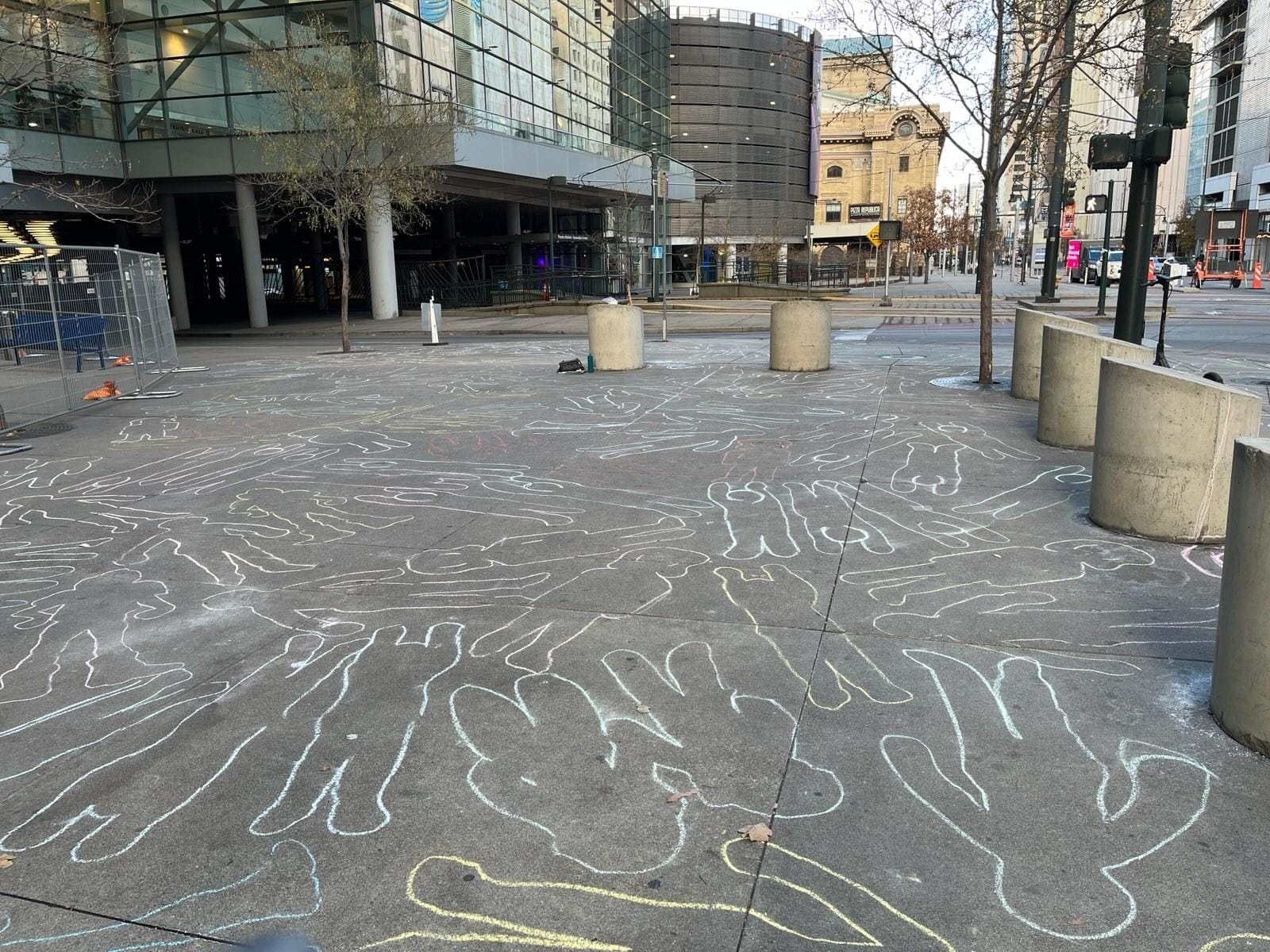
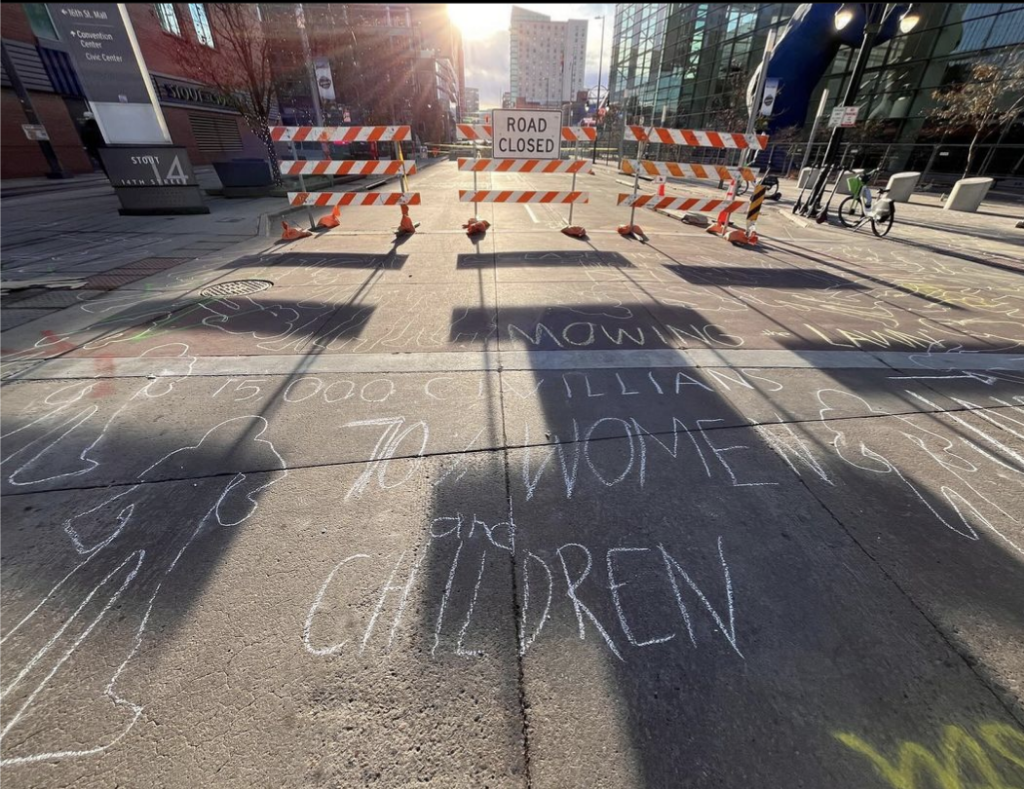
I'm glad I reached out to my friend when I was grief-stricken and overwhelmed.
Our vision of an art vigil materialized under the feet of those who chanted, sang and rallied for a ceasefire that day. It grounded the action, almost literally, in the humanity that calls us to speak out in this moment.
Let us keep finding one another, refusing to succumb to hopelessness and isolation, organizing for an end to the occupation and for our collective care and liberation.